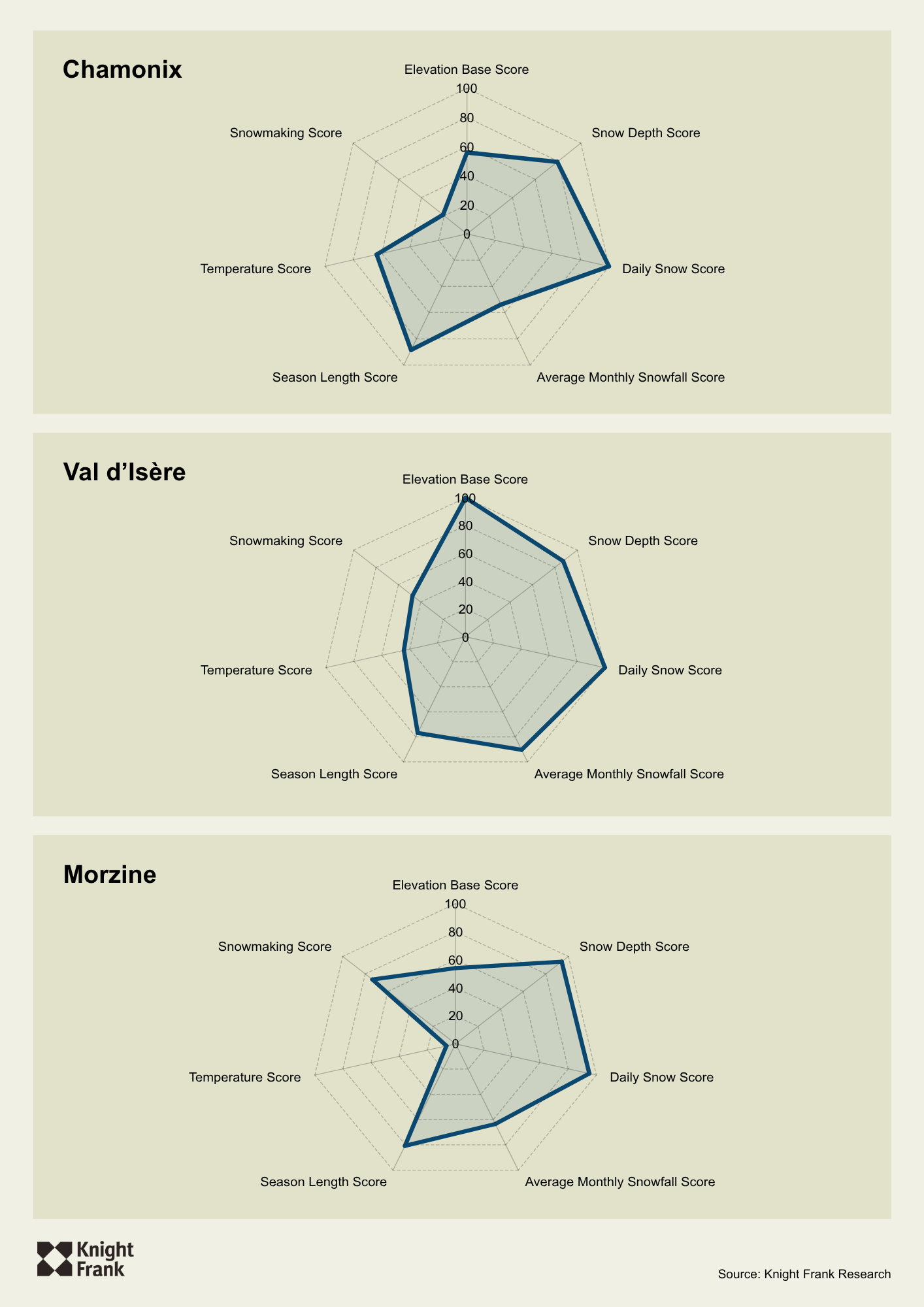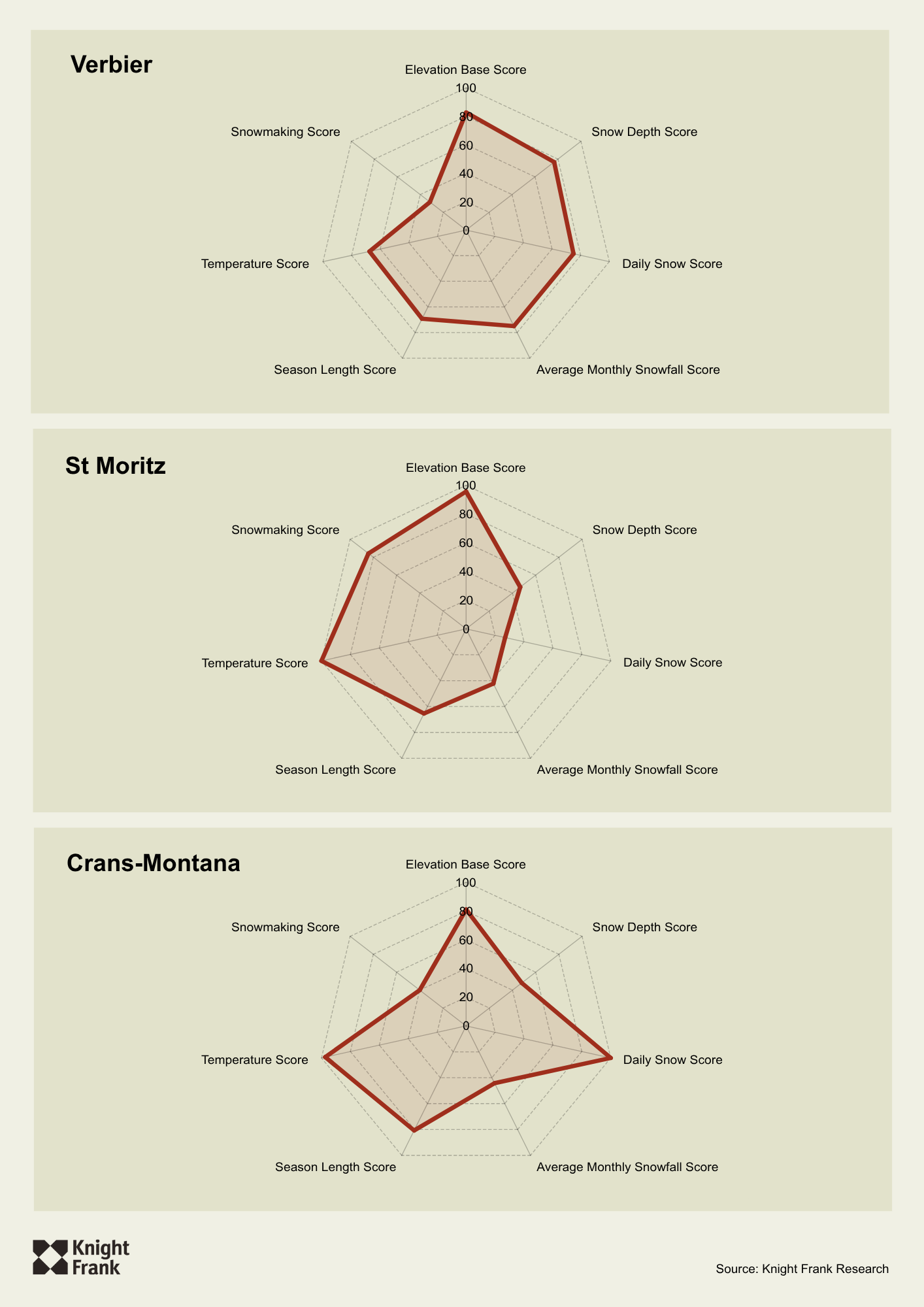The Alpine Sustainability Index: Snow reliability in focus
In Courchevel 1850, skiers braved temperatures as low as –19.2°c last season, while in Verbier, snow fell on more days than anywhere else in our analysis.
2 minutes to read
But which resort really performs best when it comes to snow reliability - and what does that mean for buyers?
How the Index Works
In our latest Alpine Property Report , we introduced the Alpine Sustainability Index - a framework designed to measure how well Europe’s top resorts perform today, and how resilient they are for tomorrow.
The index combines two key elements:
• Snow reliability score – snowfall consistency, snow depth, altitude, and snowmaking coverage
• Long-Term resilience score – infrastructure, investment, and adaptability to changing climate conditions
Together, these scores offer a rounded picture of each resort: not just the quality of skiing, but also how well it’s positioned to thrive in the years ahead.
French Resorts: Frost and Contrast
Our analysis shows striking variations across French resorts. Minimum temperatures ranged from –12.3°C in Morzine to a frosty –19.2°C in Courchevel 1850, one of the coldest resorts in our study.
High-altitude destinations such as Val d’Isère - along with Chamonix – the resort may be mid-altitude but its slopes are high - impressed with strong snow depth and dependable snowfall when conditions aligned. Here, when the snow does arrive, it delivers some of the best conditions in the Alps during peak weeks.

Swiss Resorts: Surprising standouts
In Switzerland, resorts recorded average minimum temperatures of –17.5°C over the season. Verbier led the way with the highest number of snowfall days, building depths of around 115 cm in places. Combined with a 1.5 km vertical drop from summit to base, it provides some of the most extensive and reliable terrain in the region.
Interestingly, lower-lying Villars-sur-Ollon performed strongly, matching Zermatt in the number of snow days and even outperforming it on snow depth scores. This underlines how local conditions and snowmaking investment can sometimes allow lower resorts to punch above their weight.

Why it matters
For property owners and investors, snow reliability is more than a skiing concern - it underpins rental demand, resale values, and long-term appeal. Resorts that combine dependable snow with year-round infrastructure and amenities are best placed to attract buyers looking for both lifestyle and value.
As the Alpine market evolves, the Alpine Sustainability Index provides a clear lens: highlighting not only where conditions are best today, but also which resorts are building resilience for the future.